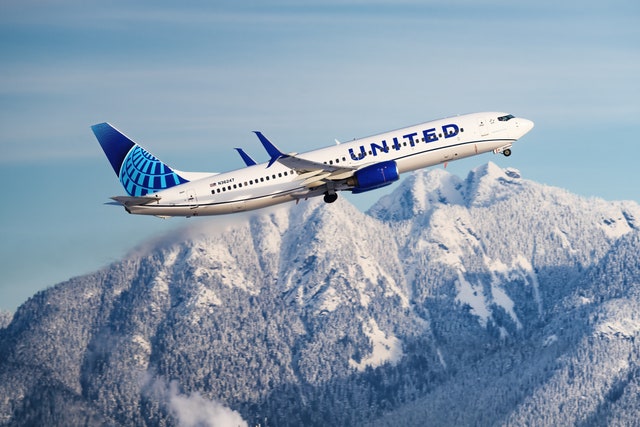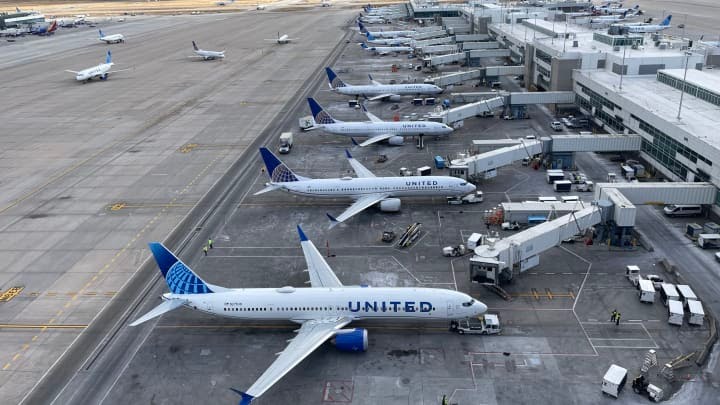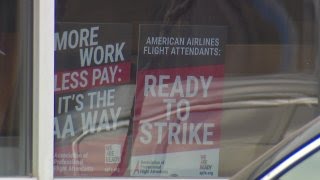United to trim US capacity as profits rise
United Airlines reported higher quarterly profits Wednesday but announced it would trim US capacity later this year as the industry contends with a seat glut that has pressured fares.
Profits at the major US carrier came in at $1.3 billion in the second quarter, up 23 percent from the year-ago period following a six-percent rise in revenues to $15 billion.
While airlines have described travel demand as still robust, carriers have pointed to an excess number of available seats that have pressured fares in the United States.
United described mid-August as a turning point, with published schedule changes showing about a three-percent decline in the industry capacity growth rate, the company said in its news release.
“We see multiple airlines have begun to cancel loss-making capacity,” said Chief Executive Scott Kirby. “United has long been preparing for the moment when industry-wide domestic capacity would adjust—it’s now clear that inflection point is just 30 days away.”
United, which saw capacity rise 8.3 percent in the second quarter, now plans to reduce capacity in the fourth quarter compared with its prior plans.
The company projected third-quarter profits of between $2.75 and $3.25 per share, below the $4.14 in the second quarter.
The airline affirmed its full-year profit forecast range, however.
United’s shares declined 1.3 percent in after-hours trading.
United Airlines Trims Profit Forecast Amid Domestic Overcapacity Challenges
United Airlines has adjusted its profit forecast for the current quarter, citing domestic overcapacity as the primary factor for the reduction. Despite this, the airline maintains its annual profit target and is optimistic about the future, anticipating a course correction as other carriers plan to reduce capacity in the coming months. This strategic adjustment is expected to position United favorably for increased profitability.
Profit Forecast Revision
In a recent announcement, United Airlines revealed that its projected Q2 profit will fall below initial expectations. The revised forecast predicts earnings between $2.75 to $3.25 per share, down from the previously estimated $3.44 per share. This adjustment mirrors a similar move by Delta Air Lines, which also lowered its profit expectations for the same period.
The overcapacity in the domestic market is the primary reason for this revision. Despite the lower-than-expected profitability for the quarter, United Airlines remains confident in its overall strategy and long-term financial targets. United’s CEO, Scott Kirby, emphasized the company’s commitment to managing costs, cash flow, and capacity in a challenging industry environment. He stated, “At United, we have been effectively managing costs, cash, and capacity against a challenging industry backdrop because we’re focused on doing what’s necessary to hit our financial targets.”
Industrywide Inflection Point
United Airlines forecasts that the US airline industry will experience an “inflection point” starting in August. During this period, capacity is expected to adjust downward, leading to higher prices for consumers based on a simple supply-demand model. For nearly two years, United has been anticipating significant domestic capacity reductions, recently announced by various U.S. airlines. Mid-August is identified as a critical point, with published schedule changes indicating an approximate three-point decline in the industry’s capacity growth rate.
Revenue Diversity Advantages
United Airlines believes it has three “critical revenue diversity advantages” that will enable it to outperform its competitors, excluding Delta, in terms of profitability. These advantages are:
- Premium Revenue: United’s premium revenue saw an 8.5% increase in Q2 compared to the same quarter in 2023. This growth is attributed to a higher number of passengers opting for premium services.
-
Basic Economy Revenue: The airline reported a 38% year-over-year increase in basic economy revenue during Q2. This significant growth is partly due to the proliferation of basic economy fares across United’s route network, attracting more budget-conscious travelers.
-
Increased Market Share Among “Domestic Road Warriors”: United has successfully increased its market share among frequent domestic travelers, often referred to as “road warriors.” This group includes business travelers and other frequent flyers who prefer United’s services for their reliability and quality.
Market Position and Strategy
United Airlines’ strategy of capturing both ends of the market—premium and basic economy—has proven effective. The airline has expanded its basic economy fares not only domestically but also internationally, competing with low-cost carriers like Spirit and Frontier in the USA, and Norse Atlantic across the Atlantic. This dual-market approach allows United to offer a wider range of products and services, catering to different customer segments.
An example of United’s success in increasing premium revenue is the experience of a Premier 1K member. Historically, upgrades were a key driver for achieving 1K status. However, due to the scarcity of domestic upgrades, many frequent flyers, including this member, now purchase front-cabin seats. This shift has contributed to the rise in premium revenue.
Future Outlook
United Airlines is optimistic about its future, despite the current challenges. The airline anticipates that capacity adjustments by other carriers will lead to higher margins. United’s strategy involves continuing to expand its operations while hoping that competitors will reduce their services. This approach is seen as a gamble, but one that United believes will pay off.
The airline also benefits from the synergies of operating a larger and newer fleet. Although Boeing delivery delays have affected the industry, United views these delays as a potential advantage in an otherwise saturated market. By managing its fleet efficiently and capitalizing on market adjustments, United aims to strengthen its position in the industry.
Earnings Call and Industry Slowdown
United Airlines plans to host an earnings call to discuss its financial performance and strategic plans. The company acknowledges the recent industry-wide slowdown, which followed a period of heightened travel demand often referred to as “revenge travel.” This slowdown has prompted airlines to reassess their capacity and pricing strategies.
During the earnings call, United’s executives, including CEO Scott Kirby, are expected to elaborate on the airline’s plans to navigate the current market conditions. The focus will likely be on how United can leverage its diverse revenue streams and market position to achieve its financial goals.
United Airlines is facing a challenging quarter due to domestic overcapacity, leading to a lower profit forecast. However, the airline remains confident in its long-term strategy and financial targets. By capitalizing on premium and basic economy revenues, as well as increasing market share among frequent domestic travelers, United aims to maintain its profitability.
The anticipated capacity adjustments in the industry are expected to create a more favorable environment for United. With a well-rounded strategy and a commitment to managing costs and capacity, United Airlines is poised to navigate the current challenges and achieve sustained growth and profitability in the coming months. The upcoming earnings call will provide further insights into the airline’s plans and the broader industry trends.






